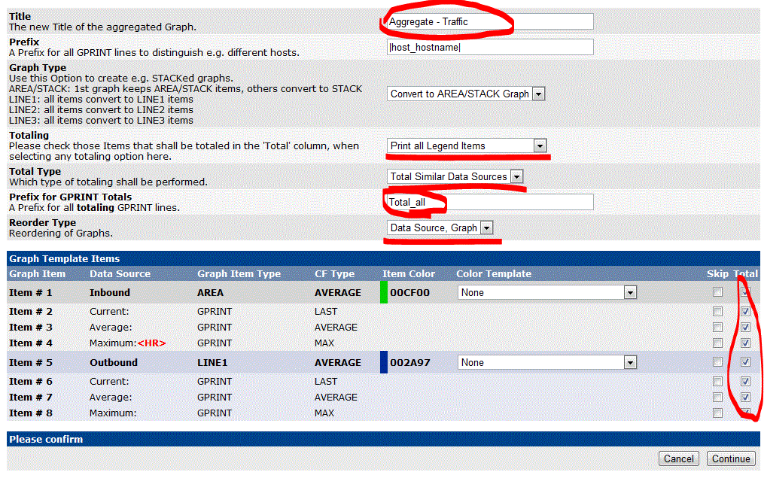Home > Download > Learning resources > Web page production
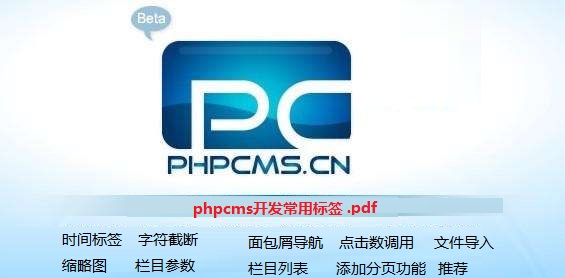
<p> Some repeated phpcms tags are often used in templates. The editor has collected some common phpcms template tags and their usage introduction. Friends who use them can use them in their own projects, which greatly saves development time. </p> <p> <strong>phpcms_v9.6.3 full version download address</strong>: <a href="http://www.php.cn/xiazai/code/5623" target="_blank">http://www.php. cn/xiazai/code/5623</a> </p> <p> <span style="color:#14191E;font-family:"font-size:14px;"></span> </p> <p style="color:#14191E;font-family:"font-size:14px;"> <strong>p</strong><strong>hpcms development tutorial</strong>: <a href="http://www.php.cn/course/381.html" target="_self">http:// www.php.cn/course/381.html</a> </p> <p style="color:#14191E;font-family:"font-size:14px;"> <strong>Commonly used tags for phpcms development pdf</strong>: <a href="http://www.php.cn/xiazai/learn/5624" target="_self">http://www.php.cn/ xiazai/learn/5624</a> </p> <p> <br /> </p> <p> <br /> </p> <p> <br /> </p>
Web page production15483342019-01-02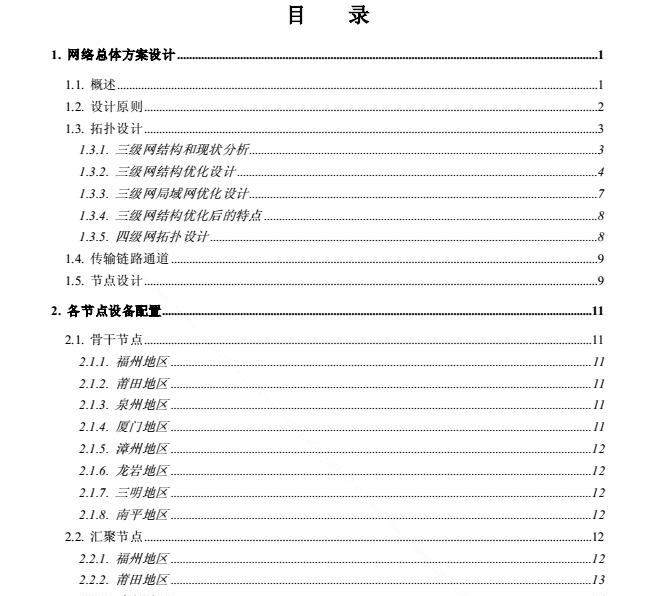
Detailed network design and implementation plan (with pictures and texts), the services transmitted in this network are classified according to security levels, and MPLS VPN is implemented on the entire network. All routing devices in the network (including access routers) have the MPLS PE function. <br /> <br /> Directory:<br /> 1. Overall network plan design<br /> 2. Equipment configuration of each node<br /> 3. Routing protocol planning<br /> 4.BGP routing protocol planning<br /> 5.IP address allocation<br /> 6. Network reliability design<br /> 7.Interconnection<br /> 8. Business access solution<br /> 9.MPLS VPN design and configuration<br /> 10.QOS deployment plan<br /> 11.Network management solution<br /> 12.Network security plan
Web page production28065632018-03-02
The 4th edition of "Network Administrator Tutorial" is compiled in accordance with the requirements of the National Computer Technology and Software Professional Technical Qualification (Level) Examination, and the content closely follows the "Network Administrator Examination Syllabus". The book is divided into 8 chapters, which systematically explain the basic concepts of computer networks, the Internet and its applications, LAN technology and integrated wiring, network operating systems, application server configuration, Web website construction, network security and network management. <br /> <br /> This book has clear layers and rich content. It focuses on the combination of theory and practice and strives to reflect the latest development of computer network technology. It can be used as a teaching material for network administrator qualification examinations and basic training on various types of network and communication technologies.
Web page production28087332018-03-02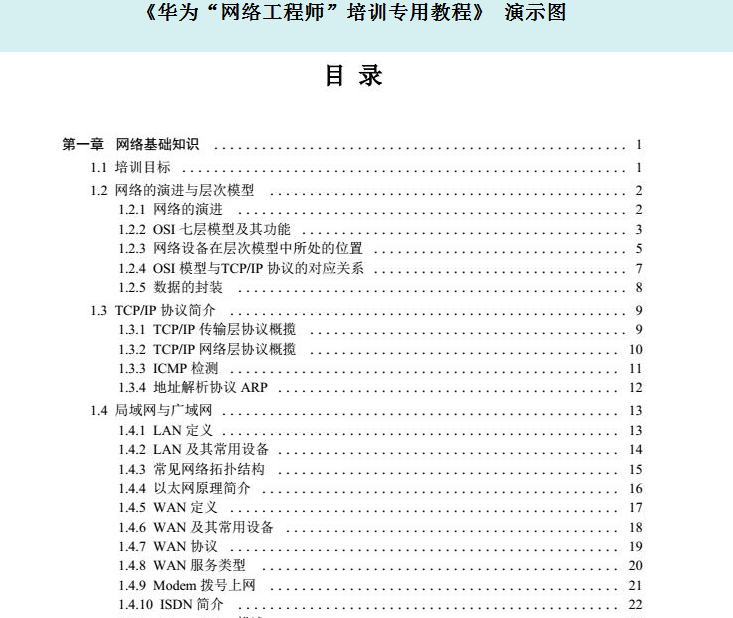
"Huawei "Network Engineer" Training Tutorial" is Huawei's internal training material. The content ranges from simple to complex, very detailed and popular, but it also explains the necessary skills of Huawei network engineers in a rich way, providing great help for the growth of network engineers. This book has a total of 529 pages. Because there are too many directories, only the following directories are briefly listed: <br /> Chapter 1 Basic knowledge of network<br /> Chapter 2 Common Network Interfaces and Cables <br /> Chapter 3 Ethernet Switch Basics <br /> Chapter 4 LAN Switch Configuration <br /> Chapter 5 Router Basics and Principles <br /> Chapter Six Introduction to Router Configuration <br /> Chapter 7 Network Layer Basics and Subnet Planning <br /> Chapter 8 IPX Protocol and Configuration <br /> Chapter 9 Common WAN protocols and configurations <br /> Chapter 10 Routing Protocol <br /> Chapter 11 Firewall and Configuration <br /> Chapter 12 DDR, ISDN configuration <br /> Chapter 13 Backup Center Configuration <br /> Chapter 14 HSRP Protocol and Configuration <br /> Chapter 15 Analysis and Treatment of Common Network Problems
Web page production28071642018-03-02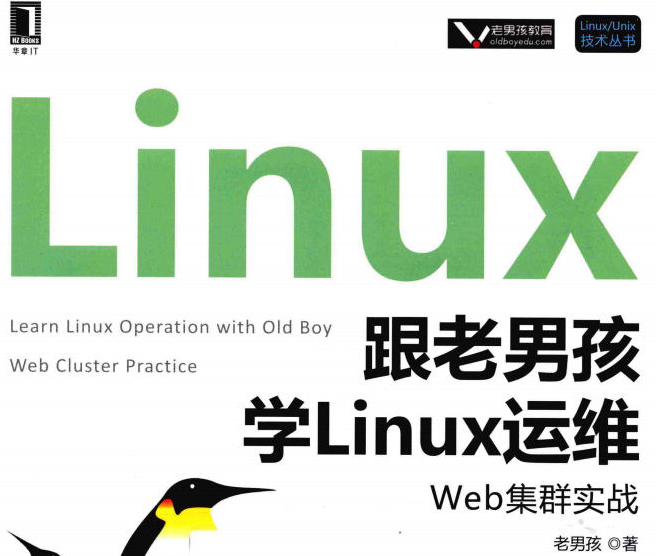
"Learning Linux Operations and Maintenance from the Old Boy: Practical Web Cluster Combat" explains in detail the construction, deployment, and optimization of small and medium-sized website clusters. The whole book can be divided into three parts, the first part of which talks about basic and important knowledge related to Linux. , the second part explains the construction of the currently popular Web environment architecture (LNMP) and enterprise-level Web optimization. The third part talks about Web cluster back-end data storage and Web cluster front-end load balancing. If you are an experienced Linux user, you can read the second part directly; but if you are a Linux beginner, please start with the basic knowledge in Chapter 1. <br /> <br /> The first part is the basics (Chapter 1~4), which briefly introduces the history of Linux, enterprise-level selection of Linux, establishment of Linux environment, enterprise-level system installation of Linux, basic optimization of Linux system, and remote connection Linux and client SSH settings, etc., and finally a more in-depth explanation of HTTP protocol and www service-related knowledge, preparing readers for building an enterprise-level Web cluster environment. <br /> <br /> The second part is Web services (Chapter 5~8), focusing on the construction of currently popular Web environment architectures such as Linux, Nginx, MySQL, PHP (LNMP), the installation and deployment of open source blog website products, Web optimization and other knowledge , preparing readers to build a complete enterprise-level website Web cluster architecture. <br /> <br /> The third part is cluster (Chapter 9~15), focusing on the Web cluster backend MySQL database, Web cluster shared storage NFS, Nginx reverse proxy load balancing, Keepalived high availability, Memcached cache and session sharing, Nagios enterprise level Monitoring and other technical practices are implemented, and finally a medium-scale website cluster architecture solution is planned for readers.
Web page production28059242018-03-02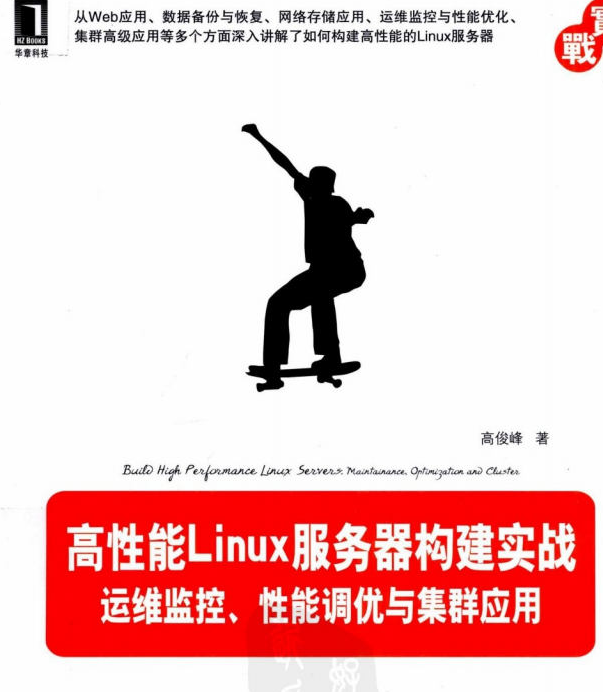
"Practical Construction of High-Performance Linux Servers: Operation and Maintenance Monitoring, Performance Tuning and Cluster Applications" is a book published by Machinery Industry Press in 2012. The author of the book is Gao Junfeng. <br /> <br /> The whole book is divided into 5 parts. The Web application chapter introduces in detail the installation, configuration, management, usage, working principles and performance tuning techniques of Nginx, Varnish and Memcached, three very commonly used Web application software on Linux servers. The data backup and recovery chapter first describes the use and management skills of the open source backup software bacula, and explains the specific methods of performing various backup and recovery operations on bacula through examples; secondly, it explains the use of the open source data mirror backup tools rsync and unison. , and demonstrated the use of these two tools in a production environment through two enterprise-level cases; finally, it explained how to use the ext3grep tool to recover accidentally deleted data files and MySQL databases. The network storage application chapter first systematically explains the configuration and use of the network storage technology iSCSI, and then explains the use and maintenance of the distributed storage system MFS. The operation and maintenance monitoring and performance optimization chapter explains how to use Nagios for performance monitoring, as well as the performance analysis principles and optimization methods of Linux servers through a combination of theory and practice. The advanced application of clusters is a synthesis of the previous content and the core of this book. It mainly describes how to build a highly available load balancing cluster through LVS+heartbeat, piranha, and LVS+Keepalived. Secondly, it explains the configuration of Red Hat Cluster Suite RHCS. Management, maintenance and monitoring, and then explains the Oracle cluster solution, the construction, use and maintenance of the Oracle RAC database. Finally, the book ends with a practical case of building a MySQL+heartbeat+DRBD+LVS cluster system, which cleverly integrates all the core contents of the book.
Web page production28056012018-03-02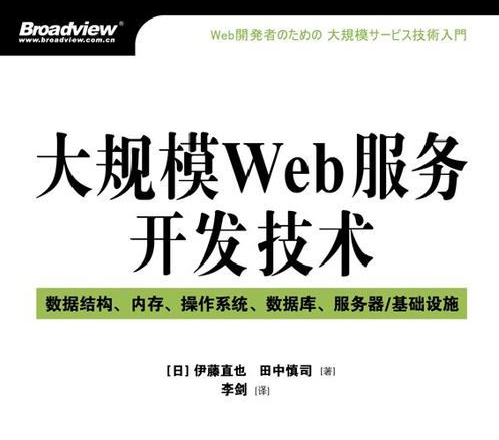
"Large Scale Web Service Development Technology" is a book published by Electronic Industry Press in July 2011. The authors are Naoya Ito, Shinji Tanaka, and Li Jian (translated). <br /> <br /> The content of "Large-Scale Web Service Development Technology" starts from the principles of operating systems and computers, and introduces the distributed methods of databases, the application of practical algorithms in the system, the principles of search engines that can support massive data, and the basis for overall overview of the system. It covers a wide range of aspects such as facility design knowledge and even introduces the economic costs of hardware. It is an indispensable reference book for operation and maintenance engineers. <br /> <br /> "Large-scale Web Service Development Technology" is an introductory book for technicians who develop and operate large-scale services. Web services are constantly growing. When the scale of its data becomes larger, it is no longer easy to process. At this time, what should be done? Is it correct? In order to avoid system downtime, what should you pay attention to when writing code? What points should be remembered when designing a system with high scalability? These are the contents of this book.
Web page production28062922018-03-02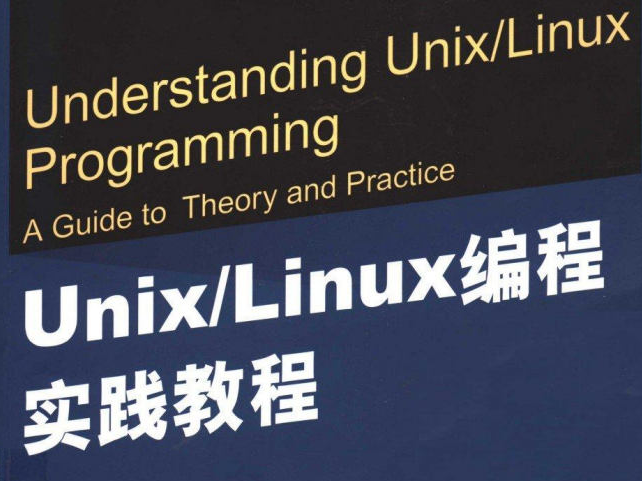
"Unix/Linux Programming Practical Tutorial" explains the working principle of Unix and the method of implementing system commands in Unix step by step, allowing readers to understand and gradually become proficient in Unix system programming, and then have the ability to compile Unix applications. The book uses various teaching methods such as heuristics, drawing inferences from one instance, and graphic explanations. The language is vivid, the structure is reasonable, and it is easy to understand. <br /> "Unix/Linux Programming Practical Tutorial" is suitable for use as a teaching material and teaching reference book for computer and related majors in colleges and universities. It can also be used as a self-study teaching material and reference manual for developers with certain system programming foundation. <br /> <br /> Table of Contents:<br /> Chapter 1 Overview of Unix System Programming<br /> Chapter 2 Users, File Operations and Online Help: Writing the Who Command<br /> Chapter 3 Directory and File Attributes: Writing IS<br /> Chapter 4 File Systems: Writing PWD<br /> Chapter 5 Connection Control: Learning STTY<br /> Chapter 6 Programming the User: Terminal Control and Signals<br /> Chapter 7 Event-Driven Programming: Writing a Video Game<br /> Chapter 8 Processes and Programs: Writing a Command Interpreter<br /> Chapter 9 Programmable Shells, Shell Variables, and Environments: Writing Your Own Shell<br /> Chapter 10 I/0 Redirection and Pipes<br />
Web page production28057672018-03-02
Ajax stands for "Asynchronous Javascript And XML" and refers to a web development technology for creating interactive web applications. <br /> Ajax = Asynchronous JavaScript and XML (a subset of Standard Universal Markup Language). <br /> Ajax is a technology for creating fast, dynamic web pages. <br /> Ajax is a technology that allows you to update parts of a web page without reloading the entire page. <br /> Ajax allows web pages to update asynchronously by exchanging a small amount of data with the server in the background. This means that parts of a web page can be updated without reloading the entire page. <br /> Traditional web pages (without Ajax) must reload the entire web page if content needs to be updated. <br />
Web page production28323652018-02-24
<p style="color:#333333;font-family:"font-size:16px;background-color:#FFFFFF;"> Some public methods and operations often used in the web development process </p> <p style="color:#333333;font-family:"font-size:16px;background-color:#FFFFFF;"> It has been some time since I became a programmer. The so-called breadth of experience is still the same. It is just the idea of multiple ways to implement a certain function. I still tirelessly type the code every day, and the carriage return on every line of code seems to have a familiar feeling. Ever since: paste and copy, paste and copy again, a website is formed, and a system is online. </p> <p style="color:#333333;font-family:"font-size:16px;background-color:#FFFFFF;"> The Internet provides apes with a large amount of resources and reproducible codes. Is experience accumulated by wasting time searching for the same problem every time? Of course not. In order to quickly and easily find some frequently used methods and use the remaining time to study some new technologies to improve the value of my own development experience, I summarized some things I usually summarized and some methods I learned online. Post it and share it with everyone </p>
Web page production28328762018-02-24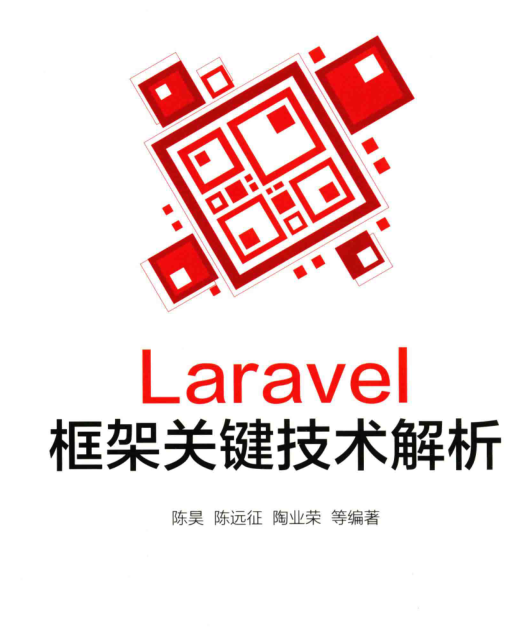
This book is based on Laravel 5.1 version, introduces the principles of Laravel construction from the perspective of framework technology, and introduces the application of Laravel functions from the source code level. By studying this book, readers can understand all aspects of the implementation of the Laravel framework and complete the development of customized applications based on the framework. Chapters 1 to 4 of this book mainly introduce the basic parts related to learning the Laravel framework. Readers can have an in-depth understanding of the design ideas of the framework, build a learning environment, and understand PHP syntax knowledge and HTTP protocol; Chapter 5 to Chapter 14 It introduces how the Laravel framework is built and used from a certain aspect, including the program life cycle, service containers and databases, etc., and also separates some of the construction technologies so that readers can learn the construction technologies and ideas of the framework. Such as the content of design patterns; Chapter 15 is a simple example that connects the previous learning content and applies it in practice, so that readers can learn to use this framework to customize applications. This book is suitable for readers who want to understand the Laravel framework construction technology, as well as readers who want to understand the Laravel framework in depth.
Web page production28328252018-02-24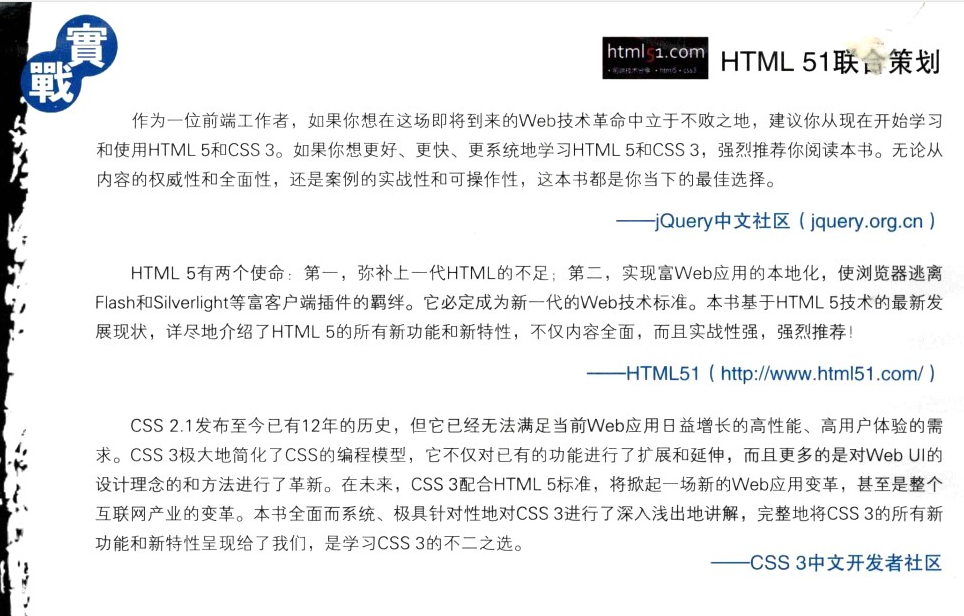
"The Definitive Guide to HTML 5 and CSS 3" is divided into three parts. The first part explains the relevant knowledge of HTML 5 in detail, including the support of HTML5 by major browsers, the grammatical differences between HTML 5 and HTML 4, HTML5 structural elements, forms and files, graphics drawing, multimedia playback, local storage, offline applications, communication APIs, webworkers, geographical location information acquisition, etc.; the second part elaborates on the relevant knowledge of CSS3, covering selectors, text Styles related to fonts, colors, boxes, backgrounds and borders, layouts, ui, mediaqueries, deformation processing, multimedia and animation, etc. The third part gradually presents two complete cases in an iterative manner, aiming to help readers integrate theoretical knowledge into practice and quickly become a trendsetter in the new generation of web development technology.
Web page production28328562018-02-24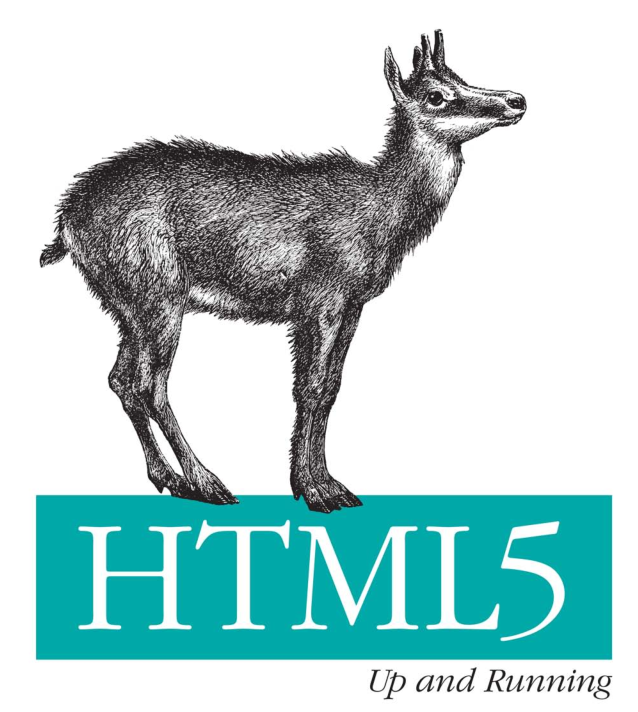
<p style="font-size:16px;color:#333333;text-align:justify;background-color:#FFFFFF;font-family:""> 1. Edit AndroidManifest.xml:<br /> The main thing is to add a second <intent-filter>, myapp is used to identify the schema. It is best to ensure that the mobile phone system is unique, so that the application can be opened instead of popping up a selection box. <br /> android:pathPrefix identifies the path of the url, which can be passed to the activity through string with its own data. For example, the complete url is myapp://xxx/openwith?data=mydata<br /> </p>
Web page production28333922018-02-24![[Web design and production——Flash.Dreamweaver.Firework].Wu Chaoying.Text version](https://img.php.cn/upload/webcode/000/000/000/5a912b73aed7d172.png)
<span style="color:#333333;font-family:Verdana, Helvetica, Arial, sans-serif;font-size:12px;background-color:#FFFFFF;">"Web Design and Production: Flash Dreamweaver Firework (Computer Application and Software Technology Major)" is compiled according to the Ministry of Education's "Guidance Plan for the Training and Training of Skilled Shortage Talents in the Computer Application and Software Professional Fields of Higher Vocational Education". The compilation of "Web Design and Production: Flash Dreamweaver Firework (Computer Application and Software Technology Major)" breaks the traditional subject system. It is project-centered and does not insist on the completeness of the theoretical system. It is based on adequacy and practicality. standard. The whole book takes the creation of a company's comprehensive website as the main line, and integrates the entire production process from website planning to web page layout design and website management. It integrates the basic methods and skills of web page production into specific projects, allowing readers to complete the task in the process. Gradually develop small website development and web design capabilities. The entire project takes overall consideration into the design of practical training, and is gradually and gradually improved. It focuses on cultivating students' ability to think independently and proactively solve problems, highlighting the characteristics of vocational and technical education. </span><br />
Web page production28330902018-02-24![[Dynamic website project training tutorial: Dreamweaver.CS4.ASP]. Deng Botao et al. Scanned version](https://img.php.cn/upload/webcode/000/000/000/5a912b4c60785426.png)
<span style="color:#333333;font-family:"font-size:12px;background-color:#FFFFFF;">"Dynamic Website Project Training Tutorial (Dreamweaver CS4) edited by Deng Botao, Zha Weiliang, and Fan Fuwei +ASP) (with CD)" introduces the method of developing and producing dynamic websites using Dreamweaver CS4 combined with ASP. The main content includes: building an ASP dynamic website operating environment, registration and login module, news release module, search query module, polling survey module, message board module, network address book module, backend management module, as well as online examination system and online bookstore comprehensive exercise project. In terms of structure, a complete website framework is first provided, and then the common typical functional modules of this dynamic website are implemented one by one, starting from " The explanation from "whole" to "part" always gives readers a clear and complete overall concept of the dynamic website and the concept of the process of making and implementing it.</span><br /> <span style="color:#333333;font-family:"font-size:12px;background-color:#FFFFFF;"> "Dynamic website project training tutorial (Dreamweaver CS4+ASP) (with CD)" level It is clear, has a concise and novel structure, and is a typical and practical project. It can be used as a textbook for computer applications and related professions, as well as a training book for relevant professional positions or a reference book for technical personnel.</span>
Web page production28328642018-02-24![[Web form design: the art of turning stone into gold]. (US) Robowsky. Scanned version](https://img.php.cn/upload/webcode/000/000/000/5a912b2389161250.png)
<div class="para" style="margin:0px 0px 15px;padding:0px;background-color:#FFFFFF;font-size:14px;color:#333333;font-family:arial, 宋体, sans-serif; "> Well-designed forms can make users feel comfortable and happy to register, pay, and create and manage content. This is the secret weapon for online business success. "Web Form Design: The Art of Turning Stone into Gold" tells the true meaning of form design through unique and profound insights and rich and real examples. By reading "Web Form Design: The Art of Turning Stone into Gold", novice designers can have extensive exposure to all the components of excellent form design. Experienced, senior designers can provide in-depth understanding of problems and solutions that were not previously noticed. </div> <div class="para" style="margin:0px 0px 15px;padding:0px;background-color:#FFFFFF;font-size:14px;color:#333333;font-family:arial, 宋体, sans-serif; "> Web Form Design: The Art of Turning Touch into Gold is intended for form designers or developers, but is also suitable for usability engineers, website developers, product managers, visual designers, interaction designers, information architects, and anyone involved with forms. Read and refer to the person who designed the questionnaire. </div>
Web page production28326032018-02-24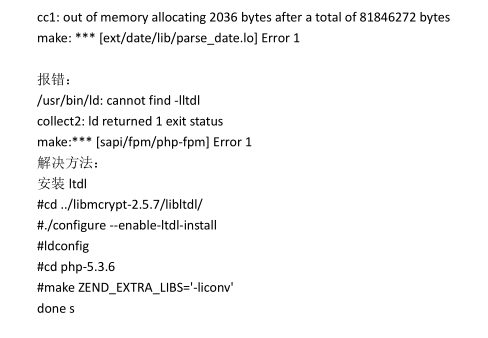
<pre id="best-content-2802198358" class="best-text mb-10">I have been writing code under Ubuntu for a year, and I have tried various Linux Distribution, and finally gave up (see my Linux for details) Distribution/desktop environment choice), the Linux desktop is too confusing, so stay on the server side. Currently using Win8.1 + Ubuntu Server 14.04 (running in VM). It is usually enough to use the PHP environment under Win. If that doesn't work, just open the VM in the background and log in with Xshell to operate. In this way, it is possible to write code under Windows and run it under Linux. (SSD means no pressure)</pre>
Web page production28640262018-02-12- Web page production28643992018-02-12
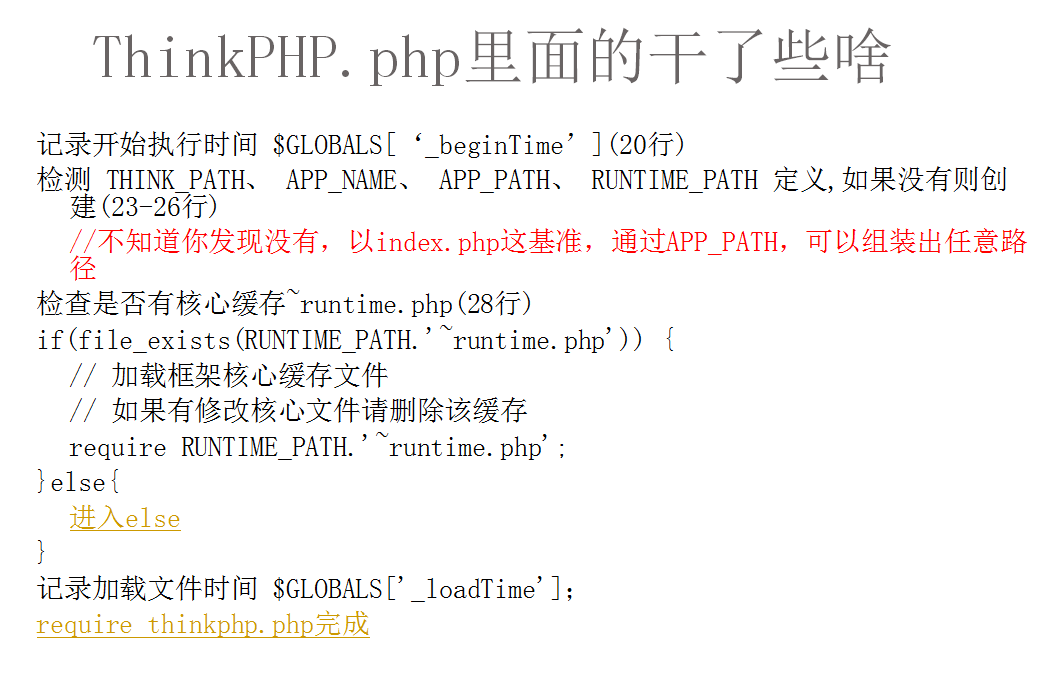
ThinkPHP was born to simplify enterprise-level application development and agile WEB application development. It was first born in early 2006, and was officially renamed ThinkPHP on New Year's Day 2007, and was released under the Apache2 open source agreement. ThinkPHP has been adhering to the simple and practical design principle since its birth. While maintaining excellent performance and minimal code, it also focuses on ease of use. And it has many original functions and features. With the active participation of the community team, it is continuously optimized and improved in terms of ease of use, scalability and performance.
Web page production28643752018-02-12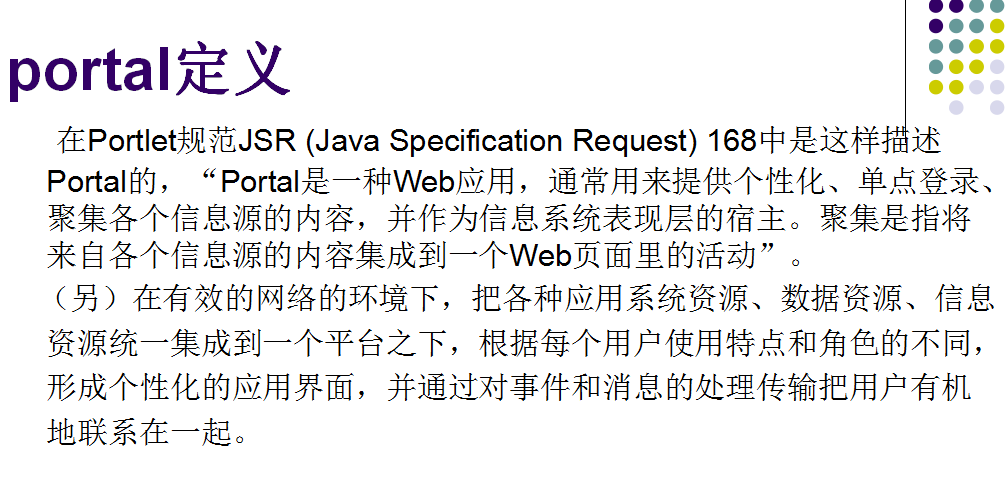
Portal serves as a gateway to a WEB site on the Internet. Portal is a collection of links, content, and guidance services that provide information that users may find of interest (such as news, weather, entertainment, business sites, chat rooms, etc.). <br /> 1. Portal serves as a WEB site on the Internet as a gateway. Portal is a collection of links, content, and guidance services that provide information that users may find of interest (such as news, weather, entertainment, business sites, chat rooms, etc.). Yahoo, Excite, MSN.com and Netscape NetCenter are all Portals. <br /> 2. In fantasy games, science fiction and some "new era" philosophies, a portal is a passage into another world in the past, present or future, or into an expanded understanding. <br /> 3. In 3D graphics development, Portal is a technology that increases the effect of realism and accelerates display. <br />
Web page production28640532018-02-12
